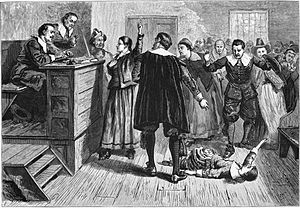
Centuries before they were portrayed as heroes in the Harry Potter books, witches were considered public enemy number one. Church officials in 16th-century Europe linked the practice of witchcraft to the devil, claiming that all witches drew their power from evil. According to folklore and books written at the time, witches could ruin crops, curdle the milk of livestock, blot out the stars, control the weather, and curse their neighbors. Anyone suffering a run of rotten luck could blame it on a witch. Suspected witches were rounded up, tortured into confessing any number of crimes, and then burned alive at the stake. By the 1700s, as many as 60,000 suspected witches had been tried and executed in Europe.
Fear of witches spread across northern Europe and even to the new colonies in North America. One of the most famous witch trials took place in Salem Village (now Danvers, Massachusetts, U.S.A.) in the 1690s. It started when a group of young girls began suffering from bizarre fits. They blamed a West Indian slave named Tituba for teaching them witchcraft, and soon the list of suspected witches grew to include other villagers, including men and a six-year-old child. The panic that followed cost the lives of 20 people. Scholars suspect the girls who started the ordeal were simply looking for attention. Another possibility: A fungus in the town’s food supply may have caused hallucinations of bewitchment.
Picture Credit : Google

